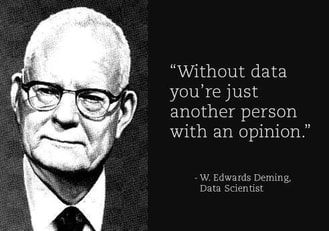|
For those of us that have been around the consumer hardlines business for a year or more know what a Product Line Review (are better known as PLR) is. Brick and mortar retailers having outlets nationally or throughout a region, product line reviews are customary for key product classifications. From a big picture view, the line review process – defined, orchestrated, and by invitation only – is a good thing. I continue to be surprised to the lack of effort and strategic planning many of the companies put forth for PLR’s. With many companies, where the leadership for approaching the line review is misunderstood or misplaced. My experience suggests Marketing take the leadership role and carefully engage sales leadership to co-pilot the course. Whatever function might lead the process, the critical part is to have strategic alliance within the organization for support, clarity, and harmony in the direction. Product Line Reviews can be daunting. I think the process is not only important, but provides the best opportunity for a level playing field. The key point is the process enables a collection of category specific inputs that serve the retailer and the consumer, as well as a preset agenda for suppliers to make the case for their goods and service.  For Retailers: it is the opportunity to review the product category in totality from suppliers. That supplier input is essential for the retail buyer to make an assessment to how the business is performing compared to other retail venues. There is likely no better authority on specific product categories than the supplier community. Additionally, the entry of category disrupters (those new or making entry into a product category, bring a fresh perspective to what might be a static segment.) For Consumers: the review and vetting process of Product Line Review can (operative word) ensure the best innovations, quality, and price for goods is being offered. It is important to understand those three elements may or may not be part of the retailer’s value-proposition. To make the point – the clothing selection at Ross Stores will be different than those at Nordstrom.  The Supplier: And that is what this article is about – the SUPPLIER. It is about the incumbent supplier defending and/or growing their business (important to understand that “defending and growing” one’s business may not be in harmony with one another, nor the objective. And that is ok.). It is also about the supplier that seeks to begin a transactional or strategic relationship with a retailer. These two sentences above can give you the sense of the complex nature of approaching Product Line Reviews. Line reviews are dangerous for the incumbent vendor. It is your business to defend and defending it you must. The supplier that doesn’t have the business and really wants in will be aggressive on multiple fronts to earn the business. A CEO I worked for gave me a quote I will never forget, as I was hand-wringing about the selling price to earn some new business. After presenting the facts, both pros and cons, he looked up from the supporting documents and said; “David, we can’t make money on business we don’t have.” That statement is so true and in this context is why an incumbent vendor has a lot of risk to bear. There are so many nuisances in the approach for a line review. It is too much to write for clarity in one article. But I believe you will understand and appreciate the multiple tentacles that need thought and clarity as supplier’s faceoff in the line review process. There are 3 Commandments that are the foundation for a successful Product Line Review approach. Do keep in mind, these 3 commandants do weave into one another. #1 – Know Thy Customer It has been said many times – Know Thy Customer and is Sales & Marketing 101. You must know your customer very well for the Product Line Review. You can bet your competition will. Buyers Goals. This is important to have that one-on-one meeting prior to the line review invitations being sent. Thoughtful, planned questions that lead to a discussion on common line review objectives – revenue performance, merchandising space, market-share erosion - to name a few. Those truly connected to the business should have a good feel for the what is working and what isn’t. That is more fuel for an insightful discussion. There is one simple mantra I encourage everyone to live by - - Buyers are Risk Averse. Consider the financial objectives they are charged with. It is not that the buyer is not a “merchant”, but they are charged to meet financial parameters. Their fundamental objectives typically are around leveraging sales per square foot, gross margin improvement, inventory/turns, and avoid markdowns. Why would they take a risk on something unknown, unproven, and unconfirmed? Layer on top of that the buyer doesn’t have unlimited shelf space or endless open to buy dollars. My point – get rooted with what the buyer’s objectives are. #2 – Know Thy Self As simple as it sounds; this can be the most challenging for a business as the line review approaches. Understanding your companies SWOT analysis, as well as the competitors, is good place to start. This part goes beyond SWOT and requires deep thought and collective agreement with all business stakeholders. For ease in making my point, the following are some parameters that might be considered.
 #3 – Just The Facts While all 3 of the commandments are important, this one is the most powerful. This commandment has the ability to deliver the stellar results you want. I believe the anchor for this commandment was so eloquently stated by W Edward Deming, a visionary business management leader – “Without data you’re just another person with an opinion.” That says it all, doesn’t it? Consider this:
The missing link is the real voice of the end user. This is the insight the supplier community brings to the merchandising team. The retail buyers are seeking thought leadership, product leadership, marketing leadership and the ability to flawlessly execute a program. It is your opportunity to control the conversation. All of this is embedded in the product line review process. But my hope is your business is constantly evolving and developing exciting new product to serve the end users needs and is something they want and willing to pay for. In the new product development process, there is a stage of validation and gathering information from the end user on new product or refinement to existing product (aka; New and Improved). It would be advised to enlist a professional marketing research firm as a partner. Having a creditable firm on your team is powerful. It also eliminates bias, predetermined mindset, and a narrow view of the business segment. You need a professional third-party firm to lead this charge. In fact; it could be a very wise decision to have them present for the formal line review meeting. In closing, there is an art to how these “facts” are presented. It is a balance of not too much shoveling the facts down the buyer’s throat and being delicate as to avoid an emotional flurry. This is a delicate process. A well-thought-out strategy to align with the customers goals / objectives, your company’s objective with fact-based data can bring great results. Line reviews do have the power to change one’s business for the good or the not so good. Here’s to your success for great Product Line Reviews!  David Kearsley Business leader and continuous learner in consumer durable products sold through various partner channels; retail, capital goods, infrastructure product. Transitioning to next senior leadership role with a company with a vision to grow, innovate, and create a sustainable value-proposition. My Website | My Blog Comments are closed.
|
David KearsleySenior Sales, Marketing & Business Development Executive Archives
September 2019
Categories |

 RSS Feed
RSS Feed
